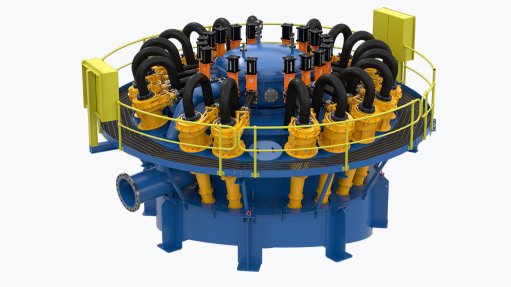DMaaS is the solution to hybrid cloud complexity woes
This article has been supplied as a media statement and is not written by Creamer Media. It may be available only for a limited time on this website.
By Iniel Dreyer, MD at Data Management Professionals South Africa
After an initial scramble to move everything to the cloud, companies are increasingly moving to a hybrid cloud environment, with a mix of private and public cloud infrastructure and services, coupled with on-premises storage.
Over the years, organisations have come to realise that there is no-one-size-fits-all when it comes to technology, and many – especially companies with legacy systems that are not cloud-ready – are paying much closer attention to what should and shouldn’t be migrated to the cloud. Yet, despite the benefits of the hybrid cloud, complexity and risks related to data management can creep in. This is where Data Management as a Service (DMaaS) can help.
The hybrid cloud model is likely to be around for a long time to come, its uptake driven by business needs such as scalability, with many businesses incorporating cloud brokerage into their strategy to leverage cost benefits of different providers. This involves the movement of data between cloud providers and introduces several challenges, chiefly complexity, and a lack of visibility when it comes to data protection.
Contrary to expectations
This is often contrary to expectations, as many companies that begin their cloud journey think that everything will just magically work. Perhaps cloud migration seems so easy due to the perception created by cloud vendors, with organisations expecting a seamless migration, an environment that is less complex and easier to manage and an IT team that can sit back because everything is expected to integrate and work perfectly.
Unfortunately, quite the opposite is often true, because with hybrid cloud models there is a lot more complexity due to data residing in different environments and there are often issues with roles and responsibilities, especially around understanding what elements the customer and vendor are respectively responsible for.
Aside from this complexity, organisations should also be cognisant of risks related to data backup and recovery. Here again assumptions tend to be made, with many companies thinking that the cloud provider will look after their data. However, this is most often not the case, so it is therefore very important that companies understand their data retention requirements. If their cloud provider does not adhere to these requirements, organisations must ensure that they have the option to protect their own data and to comply with their own rules and regulations.
Disparate systems and locations
Another challenge that comes with the nature of hybrid cloud models is that the various disparate systems and locations where data resides require a carefully planned and designed data management strategy. Failing this, companies could end up with specific point products for each environment to protect their data. This will create overly complex data management with no single pane of glass that gives companies a view of their data so that it can be adequately protected, not to mention the cost implications of operating multiple point products.
Essentially, the single pane of glass approach is key to data protection. Unfortunately, data protection is often overlooked and ends up being something that gets thrown in on the side before companies realise things are not going to work as expected. It is therefore crucial, when building out a hybrid model, to keep data protection in mind and make it part of the design. Hence, the best approach is to deploy products and solutions that provide a single pane of glass when it comes to protecting data, making it a lot easier to manage and drive down complexity.
Single view
Quite often, the solution to these challenges and a good example of the single pane of glass approach can be found in adopting a DMaaS model, which allows companies to grow and shrink their data ecosystems as their requirements change in the different hybrid cloud environments, without losing money. With a DMaaS model, it makes little difference where a company’s data sits as it will be protected, with no need to procure any additional hardware or software, even when moving data between cloud and on-premises environments.
A DMaaS model also gives companies access to the right skills and expertise via a service provider. These skillsets are often lacking in these hybrid environments, especially among small and medium enterprises, which do not have big, dedicated IT teams. The skill and expertise sourced from a provider will not only ensure the environment is designed properly, but will also free up a company’s IT staff and allows them focus on their core tasks.
Lastly, there is no capital expenditure requirement upfront, meaning that it becomes an operational expense from the very beginning. This is particularly useful for companies that are transitioning to the cloud and might not know what their data management requirements will ultimately be. Again, growing or shrinking the environment will not require any additional costs.
Comments
Press Office
Announcements
What's On
Subscribe to improve your user experience...
Option 1 (equivalent of R125 a month):
Receive a weekly copy of Creamer Media's Engineering News & Mining Weekly magazine
(print copy for those in South Africa and e-magazine for those outside of South Africa)
Receive daily email newsletters
Access to full search results
Access archive of magazine back copies
Access to Projects in Progress
Access to ONE Research Report of your choice in PDF format
Option 2 (equivalent of R375 a month):
All benefits from Option 1
PLUS
Access to Creamer Media's Research Channel Africa for ALL Research Reports, in PDF format, on various industrial and mining sectors
including Electricity; Water; Energy Transition; Hydrogen; Roads, Rail and Ports; Coal; Gold; Platinum; Battery Metals; etc.
Already a subscriber?
Forgotten your password?
Receive weekly copy of Creamer Media's Engineering News & Mining Weekly magazine (print copy for those in South Africa and e-magazine for those outside of South Africa)
➕
Recieve daily email newsletters
➕
Access to full search results
➕
Access archive of magazine back copies
➕
Access to Projects in Progress
➕
Access to ONE Research Report of your choice in PDF format
RESEARCH CHANNEL AFRICA
R4500 (equivalent of R375 a month)
SUBSCRIBEAll benefits from Option 1
➕
Access to Creamer Media's Research Channel Africa for ALL Research Reports on various industrial and mining sectors, in PDF format, including on:
Electricity
➕
Water
➕
Energy Transition
➕
Hydrogen
➕
Roads, Rail and Ports
➕
Coal
➕
Gold
➕
Platinum
➕
Battery Metals
➕
etc.
Receive all benefits from Option 1 or Option 2 delivered to numerous people at your company
➕
Multiple User names and Passwords for simultaneous log-ins
➕
Intranet integration access to all in your organisation


















